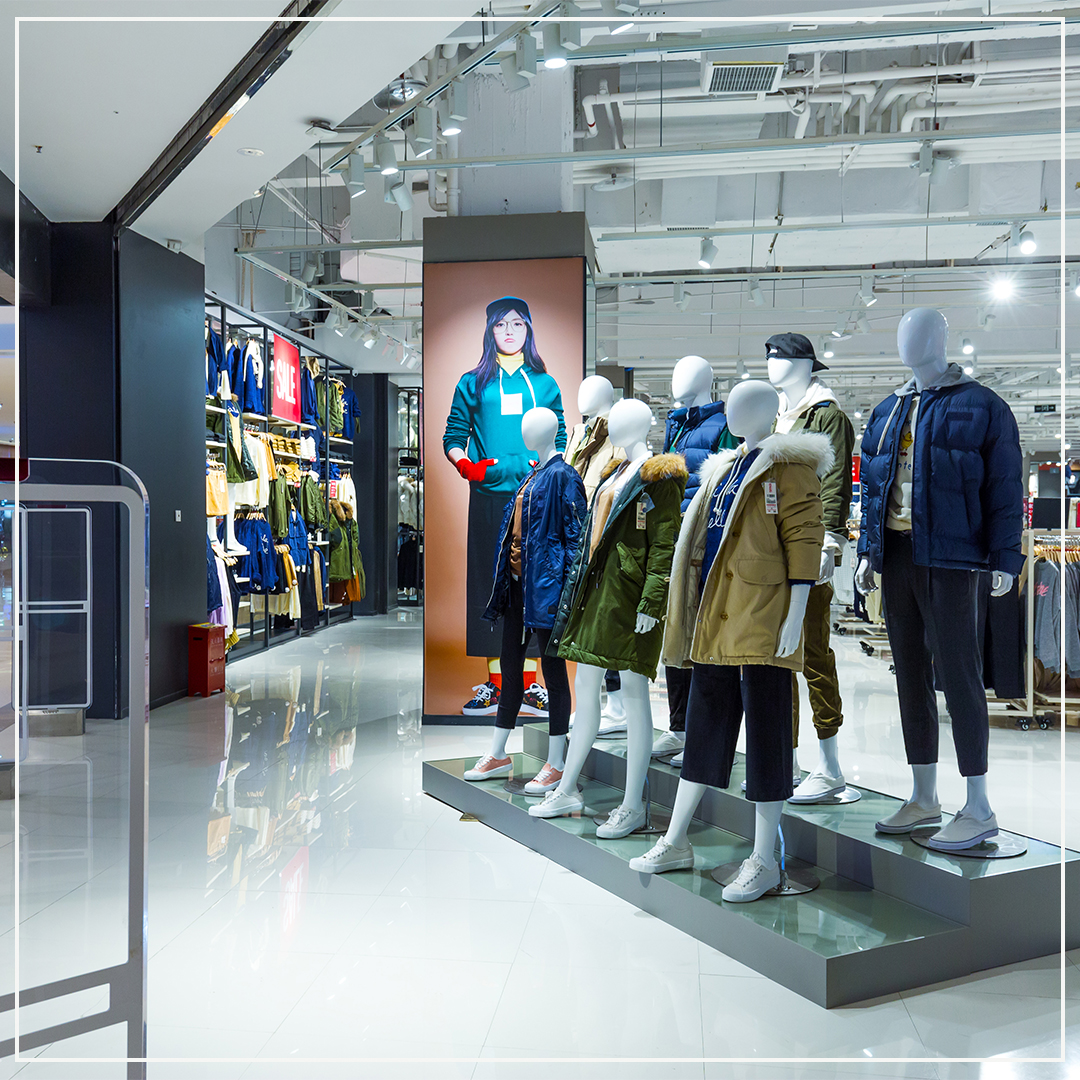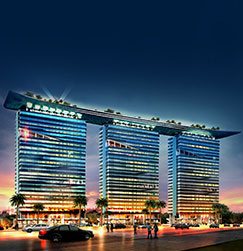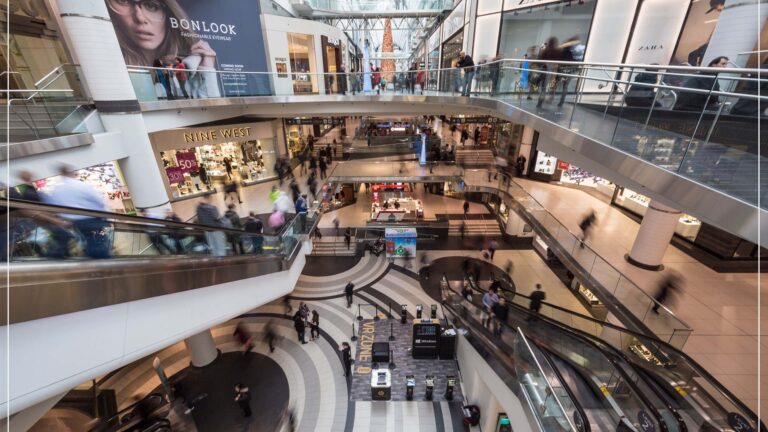How can owners and merchants collaborate to improve the shopping experience?
Malls aren’t extinct, but they may need to be redesigned. Real estate owners and merchants may work together to provide outstanding long-term value to customers by focusing on the customer experience.
Changing customer behaviour opens up new
opportunities:
Even before the epidemic, shopping malls and shops had several challenges: The emergence of e-commerce, declining foot traffic, and shifting customer purchasing tastes all posed threats to a style of shopping that had been practised for decades.
COVID-19 has expedited these trends, resulting in a more digitally centred customer who wants seamless transactions, tailored experiences, and enhanced conveniences. These new purchasing drivers underline the need for shopping mall renovation while also creating new opportunities for the sector.
More than 50 retailers filed for bankruptcy in 2020 due to pandemic-related shutdowns. As a result, vacancies increased, lowering property values and the profitability of real estate owners. In 1Q21, the vacancy rate in regional malls increased 170 basis points year on year (YoY) to 11.4 per cent. The epidemic also drove more customers online, increasing demand for omnichannel services that provide consumers with several methods to purchase, receive and return things. However, during the pandemic, e-commerce sales accounted for just 14 per cent of total retail sales, emphasizing the significance of integrating store-level inventories into the digital supply chain.
We think that retail real estate owners can play a critical role in meeting customers where they want to be. Owners may focus on three strategic goals to successfully adapt to this shifting retail environment:
– Reimagine the shopping centre’s position to fulfil different functions.
– Encourage more tenant mix customization.
– Create a new lease model that capitalizes on the value created by new business models.
However, merchants and retail real estate owners must collaborate in novel and meaningful ways to accomplish these things properly.
Certain buying habits are likely to persist:

Consumers may never purchase the same way again after the epidemic. Which habits are most likely to persist? According to recent research, consumers are returning to public life. However, the data also shows that specific behaviour, such as the “at-home economy,” persists. Consumers said they intend to work from home more than before the epidemic so that they will cook and shop from home for the foreseeable future. This inclination to stay near home may open up new options for retail malls. Is it possible for them to function as community hubs where customers may readily access experiences and events? Alternatively, may physical venues be renovated into dispersed work environments, hoteling for hybrid/remote employees, and even housing?
Another recent development in customer behaviour is using digital click and collect services like purchasing online, picking up in-store (BOPIS), buying online, picking up in locker (BOPIL), and curbside pickup. During the epidemic, people of all ages were drawn to these programmes out of concern for their health and safety. As customers acclimated to pandemic life, the driving force behind these specialized buying practices changed away from safety concerns and toward perceived price and quickness. Since convenience is a rising purchasing motivator for consumers, we anticipate this desire to persist long after the epidemic has passed.
Retail real estate owners should embrace these customer buying habits because they emphasize the value that merchants with a brick-and-mortar presence and integrated omnichannel capabilities can deliver. This is a significant advantage that brick-and-mortar merchants have over giant internet retailers, who lack the physical infrastructure to provide same-day services in many countries.
The at-home economic trend may also influence the frequency of shopping excursions. Even before the vaccination deployment, our data indicated that retail expeditions, particularly to mass merchants, home improvement stores, and grocery stores, had returned by the end of 2020. We also discovered bigger basket sizes, showing that consumers purchased more on each trip.
But, if retailers have enticed customers back to their stores with new convenience formats and experiences, how can they keep them coming back in the long run?
Cross-shopping as a differentiator:
Retailers and real estate owners recognize that a thriving shopping centre includes complimentary categories and brands. We believe cross-shopping relationships will become an even more crucial factor in in-store site planning. Instead of a more typical, one-size-fits-all shopping centre architecture, having a standard customer base can increase total consumer visitation and expenditure.
According to our data, quick service restaurants witnessed the greatest cross-shopping in 2020, followed by mass merchandisers such as Walmart and Target and grocery shops. Discretionary products, such as athletic goods, cosmetics, and jewellery, tend to profit from closeness to the footwear and apparel categories.
Understanding how online and
offline behaviour varies by geography:

While the pandemic unavoidably raised online expenditure at the expense of authentic trips, the extent of impact varied greatly depending on region/geography. As a result, merchants and retail real estate owners must localize their tactics.
Finally, these findings indicate that retail tactics should be curated and tailored at the shopping centre level and guided by local customer behaviour and purchasing patterns in their trade sectors. Furthermore, they emphasize how businesses and shopping centre owners may learn from the pandemic’s purchasing behaviours and apply that knowledge to their mutual benefit. Retailers should take a more comprehensive approach to their real estate. They should examine how they treat retailers, not just in terms of the items customers purchase, but also how they shop and want to spend for other areas of their wallet share.
Making the transition from landlord to partner:
As the year 2020 approached, many businesses and retail real estate owners had to make do with what they had. But, how can owners and merchants construct new settings or retrofit old ones with fresh aim and purpose to prepare for the post-pandemic purchasing world?
The epidemic has heightened tensions between owners and merchants. The transactional nature of many of these connections has resulted in a gap in expectations and responsibilities for various elements of the organization over time. Retailers sometimes saw owners as landlords rather than partners or colleagues. Requests for pandemic-related rent discounts have further frayed some relationships.
Retailers and retail real estate owners are experimenting with digital experiences as they attempt to rebuild traffic. They do not always understand one other’s business models, which hinders their ability to build scalable experiential solutions that benefit everyone. The relationships between owners and retailers should evolve to a more partnership model since personal coordination and collaboration will undoubtedly flourish in the future retailing era.
Finally, retail property owners may develop their tenant mix and service offerings to become multifunctional lifestyle hubs that facilitate community experiences. Smaller cities and suburbs have been rejuvenated as urbanites evacuated significant cities during the epidemic, and some mall owners may gain. 10 Shopping malls in these places may fulfil the needs of their communities by assuming the role of the “town square,” allowing businesses and retail real estate owners to meet customer requirements in ways that internet competitors cannot. Retail real estate owners might enable this trend by providing merchants with more fulfilment infrastructure, location and customer analytics, an upgraded digital presence, and a tailored tenant mix based on cross-shopping patterns.
Creating value via collaborative innovation:

Retail real estate owners have a chance to rethink the value proposition of shopping malls by thinking more like a service provider and less like a space supplier. They may increase the value of their assets by recognizing possibilities to give businesses and consumers digital and physical services. Ideally, the marketing and finance teams of retailers and retail real estate owners should develop a symbiotic partnership in which they target and service consumers jointly, rather than the usual financial and lease transaction connection.
Retailers and retail real estate owners can work together to achieve a similar goal: to improve the shopping experience. They may begin by implementing frictionless transactions, utilizing more innovative technology and innovations to create a secure and personalized buying experience. Some of this is already happening: Brookfield collaborated with Fit: Match, a 3D, AI-powered technology firm that takes rapid body measurements and delivers brand suggestions to provide a contactless clothes purchasing experience. Lululemon, the athleisure company, has added exercise space and cafés to its locations, giving customers incentive to return for reasons other than clothing buying.
Because consumers prefer to explore or purchase online, retail real estate owners should improve their online presence and give customers a consistent and smooth BOPIS experience. The shopping centre’s website and mobile app may provide information about activities and events, stores and brands, services and membership benefits and allow customers to purchase online. Bal Harbour Shops, a Miami-based shopping mall, has opened its website where customers may explore and buy merchandise from any of its store tenants. Consumers may even arrange business meetings directly for a more personalized shopping experience.
Consumers should explore items online, place purchases, and select whether they want their order picked up or delivered. Retail real estate owners might then supply the infrastructure required for merchants to offer additional conveniences such as click-and-collect, buy online ships from the store (BOSFS), and curbside returns.
Reworking the tenant mix:
As more consumer data becomes available, merchants and retail real estate owners will utilize consumer behaviour analytics to find the best tenant mix for each site. As our cross-shopping research above demonstrates, the shopping centre’s “best tenants” are those who complement each other and optimize foot traffic and revenue.
Increased anchor tenant vacancies are a significant concern for retail real estate owners today. In the United States, there are around 750 anchor vacancies, the majority of which are in class B and class C malls. As many traditional anchor tenants, such as department stores, reduce their store numbers, owners and retailers alike can reconsider what it means to be an anchor and if anchors are even necessary to satisfy the needs of the present tenant mix and customer behaviour. According to our findings, retail sectors such as food shops, which did well throughout the pandemic and had a solid cross-shopping proclivity with other merchants, might replace faltering anchors.
Retail real estate owners might bring Non-retail tenants in to anchor their assets. Simon Property Group erected a hotel to its Sawgrass Mills Mall in Florida this year, anticipating a significant comeback in tourism. Bowling alleys and sports-related venues are examples of unusual anchors. CBL Properties replaced a previous anchor department store in Greensburg, Pennsylvania, with a casino to establish a mix of entertainment, eating, and retail experiences. Some owners are also in discussions with health care renters.
Getting innovative with leasing:

Traditionally, merchants and retail real estate owners have used a set lease rental plan. However, the acceleration of online sales and pandemic-related closures have raised cost constraints, and fixed leases have exacerbated an already challenging situation for many merchants.
Given the status of retail today and the emphasis on an omnichannel strategy, owners and tenants should collaborate to align interests and share business risks. Owners may rethink the provision of overage rent and implement a hybrid rent plan with both fixed and variable components. Owners may have a stable revenue flow that reflects the intrinsic worth of the property with a defined minimum base rent, and a sales-based, variable payment component could represent the additional value owners could make by offering consumers customized experiences. A lower fixed payment may provide relief to merchants during periods of poor performance and promote tenant retention, whilst the sales-based variable may assist match the interests of both parties to optimize foot traffic and sales. However, if this hybrid model is employed, merchants and retail real estate owners must agree on what constitutes a sale, which is a challenging subject in an omnichannel world.
Taking the first step toward a brighter future:
One thing is sure: retailers and real estate owners must collaborate to optimize profitability and benefit the new retail age. They may work together to create new and exciting ways to leverage technology and analytical tools to monitor and respond to consumer preferences and deliver new and engaging customer experiences. They can also create seamless purchasing experiences across offline and online channels. Consumer spending is picking up again, and merchants and property owners can complement each other and make each other better—and more valuable. Recognizing and capitalizing on this symbiotic connection, as well as their familiar North Star—creating fantastic customer experiences and providing customer value—can provide a road to future success for both.











